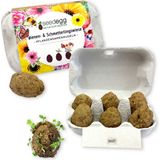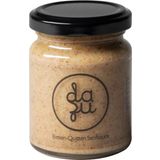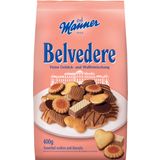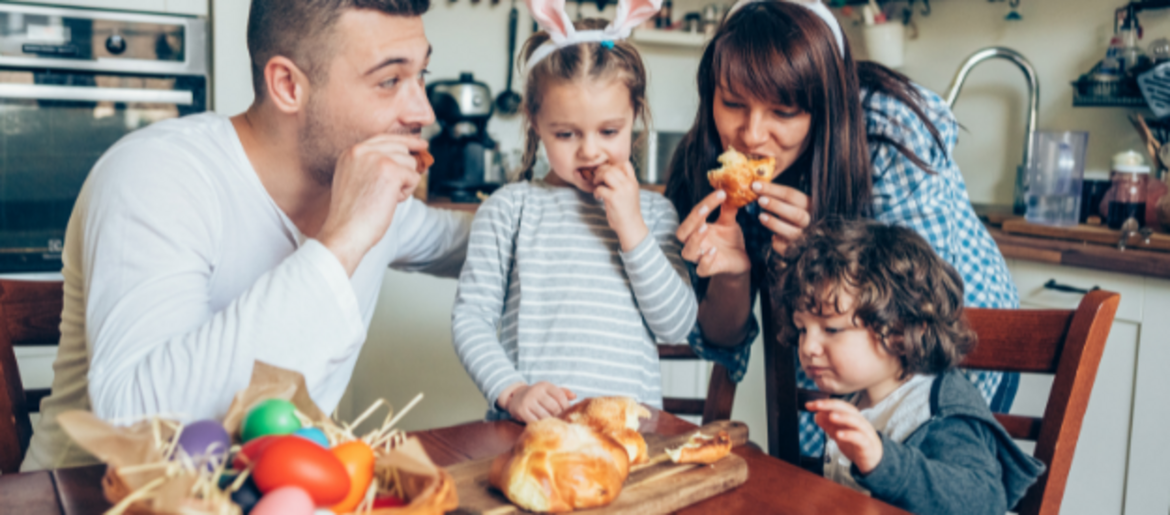Easter Traditions in Austria
In Christianity, Easter is full of rich symbolism, customs and traditions. In Austria too, there are many rituals associated with Easter. Those who have been fasting during Lent, look forward to enjoying the blessed "Osterjause" or a festive Easter meal while others look forward to a traditional "Reindling", a sweet yeast cake speciality from Carinthia. Children, in particular, are delighted to find hidden Easter nests full of chocolate Easter bunnies, chocolate eggs and other little treats in their gardens. In this article, we present 5 Easter traditions in Austria.
1. The Easter Bunny
In the past, it was the stork, fox or cuckoo that hid colourful eggs in the garden on Easter. Nowadays, it's the Easter Bunny. But why does a hopping bunny bring eggs on Easter? The most commonly accepted theory is the symbolism of the rabbit - rabbits stand for fertility and thus new life which perfectly symbolises the feast of the Resurrection of Christ.
2. Painting Easter Eggs
Painting or colouring eggs at Easter is an integral part of the traditions around Easter. In kindergartens all over Austria, painting and colouring eggs is a typical activity at this time. The reason eggs were painted goes back to the tradition of fasting during Lent, the period before Easter. Because eggs were generally not eaten during this time, they were hardboiled. To be able to tell them apart from fresh eggs, they were painted with natural plant juices. Natural dyes such as spinach or beetroot were used.
3. The Easter Bonfire
The Easter Bonfire is a long-established tradition practised on the night of Holy Saturday, the night before Easter Sunday. Clippings and branches from perennials and vines collected throughout the past year are piled in a heap and set on fire. In Alpine regions, the fire is built up around specially made wooden boxes to keep the flames under control and can reach up to 6 metres in height. This custom symbolises the resurrection of Jesus Christ and the sun as the focus of life. In this manner, the sun is welcomed back in spring with the Easter bonfire and the winter is driven away.
4. The Consecration of Palm Branches
It is known that Jesus Christ was greeted with palm branches by crowds of people when he entered Jerusalem. The tradition of consecrating palm branches commemorates this occasion. The Sunday which marks the beginning of the Holy Week is also known as Palm Sunday. On this day, many people go to church to have their palm branches blessed. The "palm" branches used for this occasion are usually bunches of evergreen twigs such as catkins, boxwood, thuja, yew or holly that are tied together in pretty and colourful little bundles. Children in kindergartens all over Asutria do this as an Easter activity as well. A painted egg is often placed in the middle. The blessed branches are then taken back home and placed near the entrance to the house.
5. The "Osterjause" or the Festive Easter Meal
There are many culinary traditions associated with Easter in Austria. In many regions, a lamb-shaped cake is eaten on Easter because the lamb is seen as a symbol of God in Christianity. Although there are regional differences in culinary traditions, one thing they all have in common is the Easter egg - there is no festive Easter meal without one! After the long period of fasting during Lent, the Easter meal includes smoked meat and sausages served with a side of spicy horseradish. In Styria, Easter meat is served with slices of "Osterpinze", a sweet yeast bread. In the states of Burgenland and parts of Lower Austria, they prefer dark bread. In the Mostviertel region, it is customary at Easter for the godmother, also called "Godn" to bring their godchildren a large crescent-shaped bread made of yeast dough called the "Godnknüpfi". In Vienna, both sweet Easter bread and dark bread are served with the Easter meal of smoked meat, horseradish and eggs. In Upper Austria, a bread made with eggs called the "Oafleck" is served. As a dessert, a cake in the form of a lamb called "Lampal" is served in Upper Austria and Salzburg.
The "Reindling" cake is a speciality from Carinthia which is a must at Easter. In Tyrol the bread eaten at Easter is called the "Fochaz" - a loaf of bread with a pattern made with an embroidery needle. The “Fochaz” is served with an egg salad and rolled ham.
In the westernmost state of Vorarlberg, the Easter meal consists of ham served with sauerkraut, egg and brown bread.
Before the Easter meal is served, it is customary for the food to be blessed at the "Fleischweihe" or the meat blessing.
Easter is the feast of the resurrection of Jesus Christ and celebrates the arrival of spring too. In Austria, Easter is usually spent with family and the festive Easter meal is enjoyed together. Happy Easter!
Shop now in our Easter category
Publication of the blog post on March 9th, 2022.
Related products
-

Feel Green "Quail Egg" Seed Eggs, 6 Pcs
-16%- 6 pieces
- Organic seeds
- Ideal planting time: April to June
€ 7,03 € 8,36 (€ 1,17 / Pc)Delivery by December 31
-

dazu Organic Pear-Quince Mustard Sauce, 140 g
-11%- Handpicked fruit
- Slightly tart & very fruity
- Pairs well with a mild Camembert
€ 5,76 € 6,49 (€ 41,14 / kg)Not available at the moment
-
 5.0 (1)
5.0 (1)Manner Chocolate Keksi Cookies, 150 g
-10%- Shortcrust cookies
- Without hydrogenated fats
- Dark chocolate base
€ 2,69 € 2,99 (€ 17,93 / kg)Delivery by December 31
-
 4.3 (3)
4.3 (3)Manner Belvedere Mix, 400 g
-10%- Delicious and aromatic
- A variety of cookies
- Includes Neapolitan wafers
€ 4,49 € 4,99 (€ 11,23 / kg)Delivery by December 31
Magazine Articles:
Discover From Austria:
-
Italy: Free standard delivery from € 49,90
-
Free
returns More than 6.200 products
Secure payments
with SSL encryption technology


